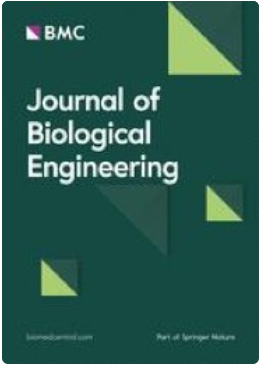将乳清废料作为经济营养品进行生物硼化,用于生产具有抗生物膜和抗癌潜力的单细胞油。
摘要
从再生资源中生产高附加值的生物化合物并将其用于医疗保健服务是白色生物技术议程中的首要目标。因此,目前的研究重点是利用奶酪乳清废液从含油真菌 Alternaria sp. (A-OS) 和 Drechslera sp. (D-OS) 中经济地生产单细胞油 (SCO),并首次将其作为抗生物膜和抗癌剂进行评估。作为生长的唯一底物,乳清有助于脂质的积累,Drechslera sp.(D-OS)和Alternaria sp.(A-OS)的脂质含量分别为 3.22 和 4.33 克/升和 45.3% 和 48.2%。同时,通过气相色谱-质谱(GC-MS)和傅立叶变换红外光谱(FTIR)表征分析发现,A-OS 的不饱和程度较高,为 62.18%,而 D-OS 为 53.15%;A-OS 和 D-OD 的ω-6 多不饱和脂肪酸含量较高,分别为 22.67% 和 15.04%。有趣的是,在使用这两种 SCO 作为抗生物膜剂时,观察到了显著的抗生物膜效力(P ≤ 0.05),其效力与剂量有关。其中,100 µg/mL 的 A-OS 对铜绿假单胞菌、金黄色葡萄球菌和白僵菌生物膜的抑制率分别为 84.10 ± 0.445%、90.37 ± 0.065% 和 94.96 ± 0.21%。而 D-OS(100 µg/mL)对铜绿假单胞菌、金黄色葡萄球菌和白僵菌生物膜的抑制率分别为 47.41 ± 2.83、62.63 ± 5.82 和 78.67 ± 0.23%。此外,生物膜基质内细胞的新陈代谢性能、蛋白质、碳水化合物含量和生物膜的疏水性也受到抑制,这与生物膜的生物量有显著相关性(r ≥ 0.9)。此外,作为抗癌剂,D-OS 对 A549 和 CaCo-2 细胞系具有更高的效力,IC50 值分别为 2.55% 和 3.425%,SI 值分别为 10.1% 和 7.5%。然而,A-OS 对 Caco-2 细胞的 IC50 值和 SI 值分别为 8.275% 和 2.88。此外,在 A549 细胞和 Caco-2 细胞中,A-OS 对 Caspase 3 的激活率分别为 64.23 ± 1.18% 和 53.77 ± 0.995%,高于 D-OS(52.09 ± 0.222% 和 49.72 ± 0.952%)。此外,与癌症侵袭、转移和血管生成有关的酶(即 MMP2 和 MMP9)受到 A-OS 的强烈抑制,IC50 值分别为 18.58% 和 8.295%;而 D-OS 的结果分别为 23.61% 和 13.16%,这可能是由于 A-OS 中的ω-6/ω-3 含量较高。目前的研究结果很有希望,这为将 SCOs 用作抗感染保健品、补充/替代疗法和预防方案开辟了前景。The production of value-added bio-compounds from rejuvenated sources and their recruitment for healthcare services are paramount objectives in the agenda of white biotechnology. Hereupon, the current study focused on economic production of single cell oils (SCOs) from oleaginous fungi Alternaria sp. (A-OS) and Drechslera sp. (D-OS) using cheese whey waste stream, followed by their evaluation as antibiofilm and anticancer agents, for the first time. As a sole substrate for growth, the whey aided in lipid accumulation by 3.22 and 4.33 g/L, which representing 45.3 and 48.2% lipid content in Drechslera sp. (D-OS) and Alternaria sp. (A-OS), respectively. Meanwhile, a higher unsaturation degree was detected in A-OS by 62.18% comparing to 53.15% of D-OS, with advantageous presence of omega-6 poly unsaturated fatty acid by 22.67% and 15.04% for A-OS and D-OD, respectively, as revealed by GC-MS and FTIR characterization analysis. Interestingly, an eminent and significant (P ≤ 0.05) antibiofilm potency was observed in a dose-dependent modality upon employing both SCOs as antibiofilm agents. Whereas, 100 µg/mL of A-OS recorded superior inhibition of P. aeruginosa, S. aureus and C. albicans biofilms development by 84.10 ± 0.445, 90.37 ± 0.065 and 94.96 ± 0.21%, respectively. Whereas, D-OS (100 µg/mL) thwarted the biofilms of P. aeruginosa, S. aureus and C. albicans by 47.41 ± 2.83, 62.63 ± 5.82 and 78.67 ± 0.23%, correspondingly. Besides, the metabolic performance of cells within biofilm matrix, protein, carbohydrate contents and hydrophobicity of examined biofilms were also curtailed in a significant correlation with biofilm biomass (r ≥ 0.9). Further, as anticancer agents, D-OS recorded higher potency against A549 and CaCo-2 cell lines with IC50 values of 2.55 and 3.425% and SI values of 10.1 and 7.5, respectively. However, A-OS recorded 8.275% and 2.88 for IC50 and SI of Caco-2 cells, respectively. Additionally, A-OS activated caspase 3 by 64.23 ± 1.18% and 53.77 ± 0.995% more than D-OS (52.09 ± 0.222% and 49.72 ± 0.952%) in A549 and Caco-2 cells, respectively. Furthermore, the enzymes, which associated with cancer invasion, metastasis, and angiogenesis (i.e., MMP2 and MMP9) were strongly inhibited by A-OS with 18.58% and 8.295%, respectively as IC50 values; while D-OS results recorded 23.61% and 13.16%, respectively, which could be ascribed to the higher ω-6/ω-3 contents of A-OS. The promising results of the current study opens up the vision to employ SCOs as anti-infective nutraceuticals and in complementary/alternative therapy and prophylactic programs as well.

 求助内容:
求助内容: 应助结果提醒方式:
应助结果提醒方式:


